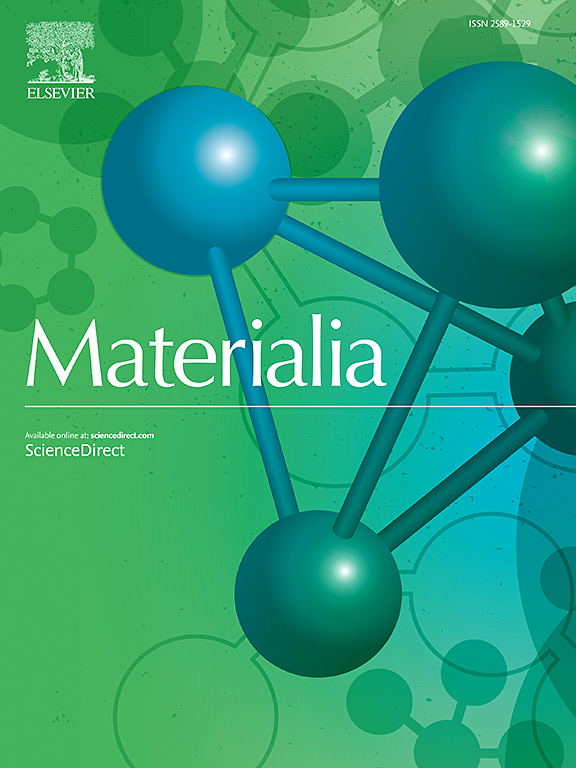铸造、热塑性成形和金属合金增材制造中玻璃形成的分析方法
IF 3
Q2 MATERIALS SCIENCE, MULTIDISCIPLINARY
引用次数: 0
摘要
开发具有高玻璃成形能力(GFA)和广泛目标特性的金属玻璃(mg)对于其广泛的工业应用至关重要。直到最近,MG的厚截面只能通过铸造形成,并且只能用于有限数量的成分。在热塑性成型和mg的增材制造方面的进步提供了一个前景,即可以用简单铸造的成分来制造大块部件,这些成分只能在高冷却速率下形成玻璃,并且不可能批量实现。因此,仅仅从避免简单铸件结晶的临界冷却速率来考虑GFA是不够的。为了重新定义每个加工路线的高GFA,我们开发了一个分析模型来预测玻璃成型液体结晶的时间-温度转变(TTT)图上的c曲线。我们发现决定GFA的主要参数是降低玻璃化转变温度Trg和液体脆性m。利用该模型,我们推导并验证了一系列性能指标(Trg和m的组合),以指导铸造、热塑性成型和增材制造中玻璃成型成分的优化。本文章由计算机程序翻译,如有差异,请以英文原文为准。

Analytical approach to glass formation in casting, thermoplastic forming and additive manufacturing of metal alloys
Developing metallic glasses (MGs) with high glass-forming ability (GFA) and a broad range of well-targeted properties is critical for their widespread industrial use. Until recently, thick sections of MG could be formed only by casting and only for a limited number of compositions. Advances in thermoplastic forming and additive manufacturing of MGs offer the prospect that bulk components can be made from compositions that on simple casting would form a glass only at high cooling rates and be impossible to realise in bulk. It is therefore no longer adequate to consider GFA only in terms of the critical cooling rate to avoid crystallization in simple castings. To redefine high GFA for each processing route, we develop an analytical model to predict the C-curve on a time-temperature-transformation (TTT) diagram for the crystallization of a glass-forming liquid. We show that the dominant parameters determining GFA are the reduced glass-transition temperature Trg and the liquid fragility m. Using the model, we derive and validate a series of merit indices (combinations of Trg and m) to guide the optimization of glass-forming compositions for casting, thermoplastic forming and additive manufacturing.
求助全文
通过发布文献求助,成功后即可免费获取论文全文。
去求助
来源期刊

Materialia
MATERIALS SCIENCE, MULTIDISCIPLINARY-
CiteScore
6.40
自引率
2.90%
发文量
345
审稿时长
36 days
期刊介绍:
Materialia is a multidisciplinary journal of materials science and engineering that publishes original peer-reviewed research articles. Articles in Materialia advance the understanding of the relationship between processing, structure, property, and function of materials.
Materialia publishes full-length research articles, review articles, and letters (short communications). In addition to receiving direct submissions, Materialia also accepts transfers from Acta Materialia, Inc. partner journals. Materialia offers authors the choice to publish on an open access model (with author fee), or on a subscription model (with no author fee).
 求助内容:
求助内容: 应助结果提醒方式:
应助结果提醒方式:


